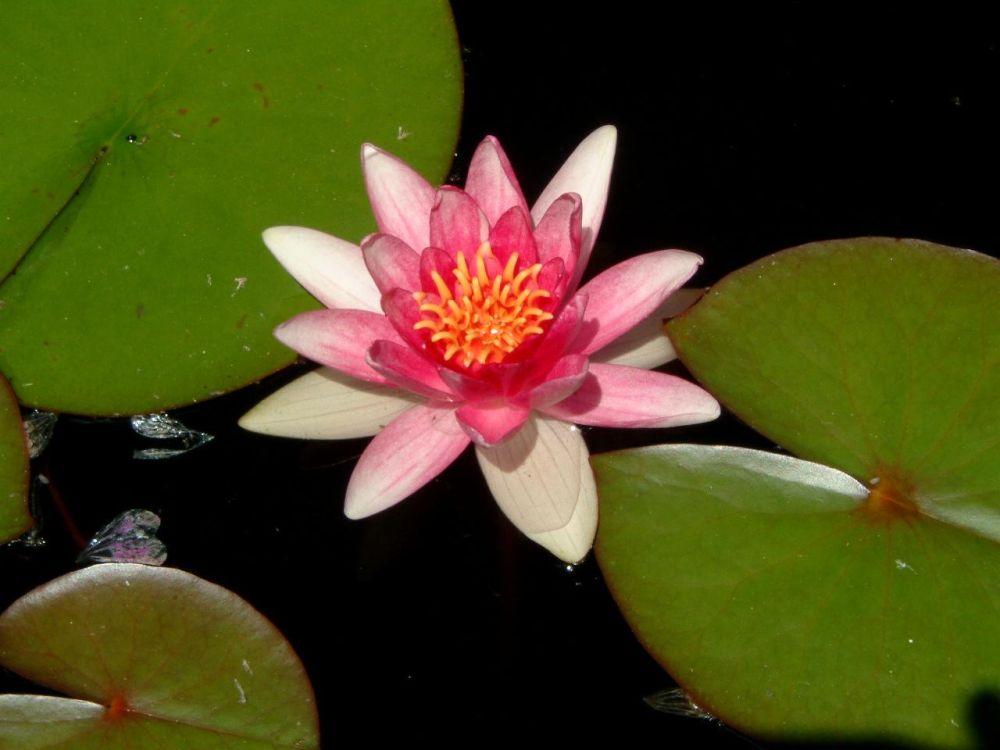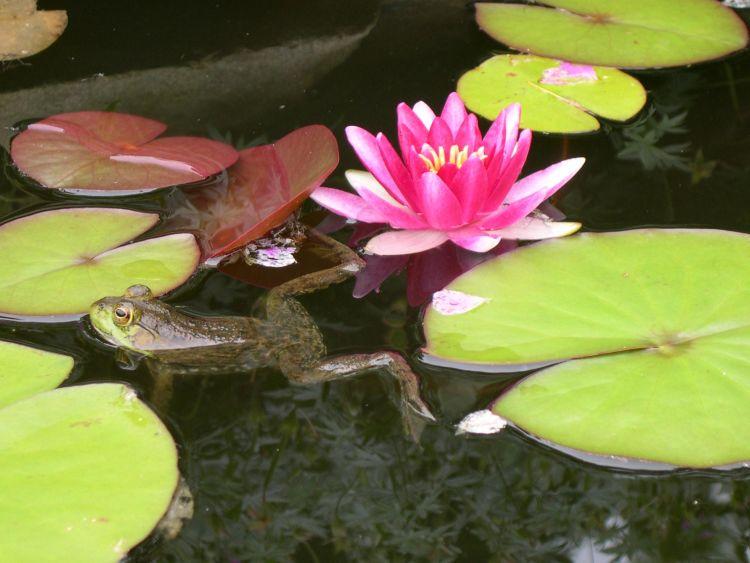Special adaptations of aquatic plants
- Tags:
- Wildlife,
- Something Wild

Floating leaves and flowers of aquatic water lilly
You need no special excuse to seek cool water on a hot summer day. Water lilies provide a perfect mid-summer setting to explore the specialized role of aquatic plants in NH ponds and wetlands. Paddlers and shoreline hikers alike admire scented, floating flowers of water lilies blooming in July. Fragrant yellow and white blossoms seem lotus-like amid a raft of floating lily pads atop shallow freshwater ponds.
Their hollow stems link floating leaves to shallow roots anchored in soft muck. Without need for strength, the stems are flexible to withstand currents and changes in water level. Spongy air bladders add buoyancy. Terrestrial plants are about 5% air space, aquatic plants can be 60% air. The adaptations also allow aquatic plants to absorb water, nutrients and dissolved oxygen directly from the water.

Juvenile fish shelter beneath lily pads amid long stems in a submerged forest. Large fish like pickerel and bass, lurk at edges hunting fish, frogs and insects. Frogs and painted turtles bask in summer sun atop floating rafts of lily pads while aquatic insects like dragonflies and damselflies, dry their delicate transparent wings after emerging as crawling, aquatic larvae.
Other emergent wetland plants include native pickerel weeds that provide concealment cover for waterfowl and wading birds. Cattail reeds offer nesting sites for red-wing blackbirds and starchy tuberous roots preferred by muskrats and beavers. At night, a chorus of green frogs and bull frogs resounds from the floating gardens where pond hockey games were played just months ago.
